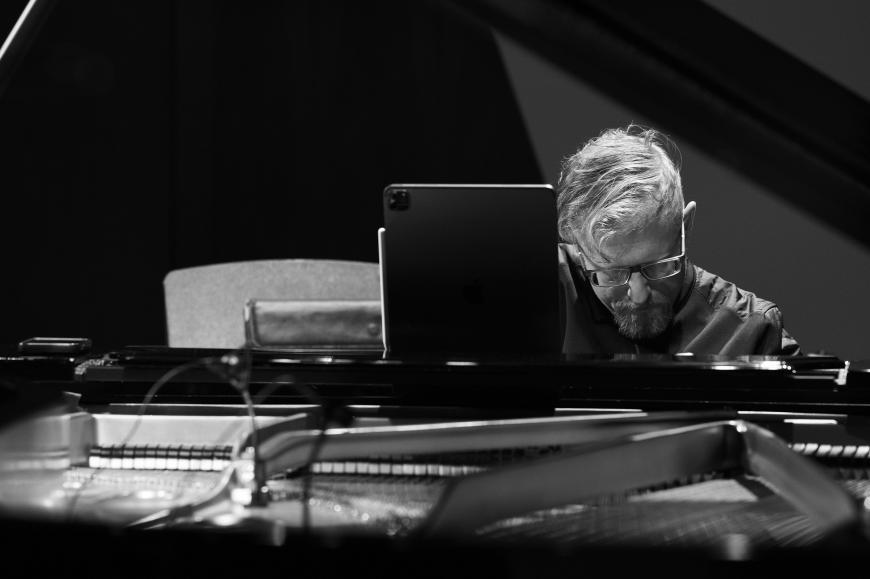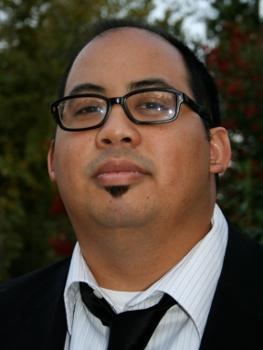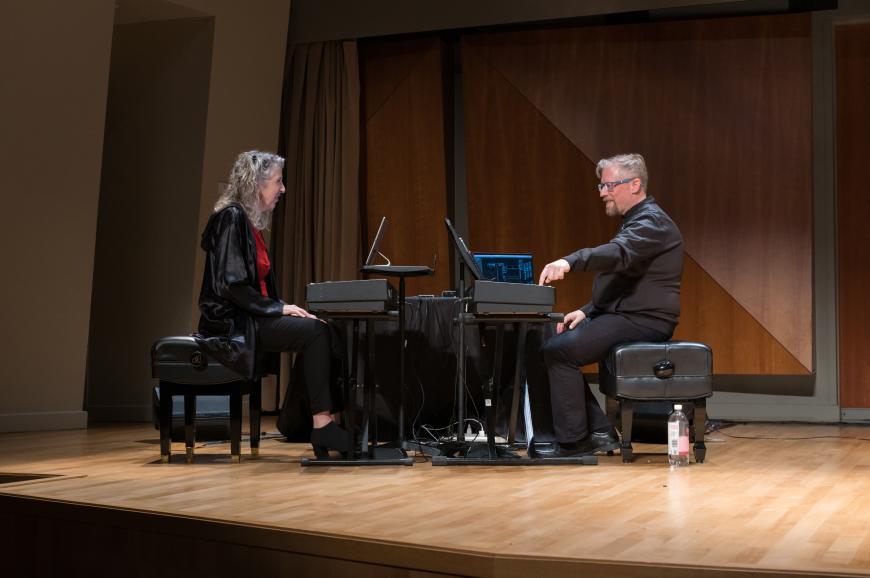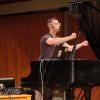
Pianist Aron Kallay rounded off Piano Spheres’ 28th season with a concert devoted to various “ecstatic states” — a program that spiraled out from his experience of revisiting his favorite Alexander Scriabin work, the Piano Sonata No. 5, Op. 53 (1907), after a long time of not playing during quarantine. It’s easy to see how such a high-octane pianist would gravitate toward Scriabin during the pandemic — the composer’s detail and passion can be all-consuming, and many of us were looking for things to completely absorb our attention. It does take a committed artist, however, to choose mastering a hypercomplex late-Romantic gauntlet over, say, a jigsaw puzzle.
But a puzzle is less likely to inspire an ecstatic state, or for that matter a whole concert program and two commissions. Kallay is a powerhouse on the Los Angeles new-music scene, having co-founded People Inside Electronics and Brightwork newmusic while regularly appearing with a myriad of ensembles and performing with pianist Vicki Ray as part of the Ray-Kallay Duo.

His May 30 concert at Thayer Hall at the Colburn School opened with the premiere of Dante De Silva’s Savory, for which Kallay played both the piano and a MIDI keyboard controller placed organ-style atop the piano. De Silva deftly folds microtones and haunting clips of soprano Lucy Fitz Gibbon into languid acoustic playing in this piece, and it was impressive both how naturally Kallay delivered the work and how carefully this augmentation of the piano was curated. Stylistically, the piece lives squarely in the language of art song. The heightened eerie expression, even the disembodied segment of text from poet Charles Baudelaire, “la douleur savoureuse” (the savory pain), felt operatic in its tension.
Ray made an appearance to perform Sean Friar’s Fit (2020), which Kallay introduced in somewhat theatrical terms — that his and Ray’s different personalities were represented by disparate tuning systems. Humor ensues. The trajectory of the work follows the pianists arriving at a place of “fitting” together despite “ill-fitting” temperaments, but that behavioral aspect was less interesting than the gorgeous meshing and shifting of the different tuning systems themselves. A highlight was an elegant stretch of rippling ostinato that grew into what felt like a mythical scene of some waterbird spirit dancing over a reflecting pool. The characteristic combination of earnest sound exploration and light wit that Friar brought to the work was delightful.
Ecstasy, like the ecstasy of pain, is often conceived of as solipsistic, an experience beyond description, precluding the involvement of others. Scriabin has something of this distance and appeal. We might be fascinated by his fascination, but that experience — his precipitous peaks and trench-like lows — is not ours.
Aside from Friar’s duo, all the pieces on the program were framed as soliloquies in some altered state, and as such there was the risk of alienating the audience, as well as the opportunity to draw people into these nuanced, heightened experiences.

Rajna Swaminathan’s new work, Lodestar, is welcoming in this way. Swaminathan derived the score, described by Kallay as “medium improvisatory,” from trance-like experiences she had improvising on a Carnatic song, “Mathe Malayadwaja” (O mother goddess), which she learned from her paternal grandmother. The palette of colors is somber yet rich in feeling; Kallay floated increasingly intricate lines over tide-like chords. Swaminathan has delivered a piece, described wonderfully in her own words, that “invites us to surrender to the swirling chaos while finding anchor in a commitment to tenderness,” and I am looking forward to hearing Kallay’s future iterations of the work.
The second half of the concert was ambitious in terms of the concentration it required, both from Kallay and the audience. Still Life With Piano (1989) by Frances White, an electroacoustic deconstruction of a one-minute piano solo, and Alvin Curran’s Hope Street Tunnel Blues III (1983), a minimalist freight train of a piece, are on opposite ends of the dynamic and tempo spectrums, but both were difficult to latch on to for the duration of their performances. In the former, Kallay dimmed the lights and seemed to disappear into the clouds of sound processing, and in the latter he put his athleticism as a performer on full display, drawing all eyes. His wonderful artistic flexibility, however, didn’t save the pieces from lack of interest.



